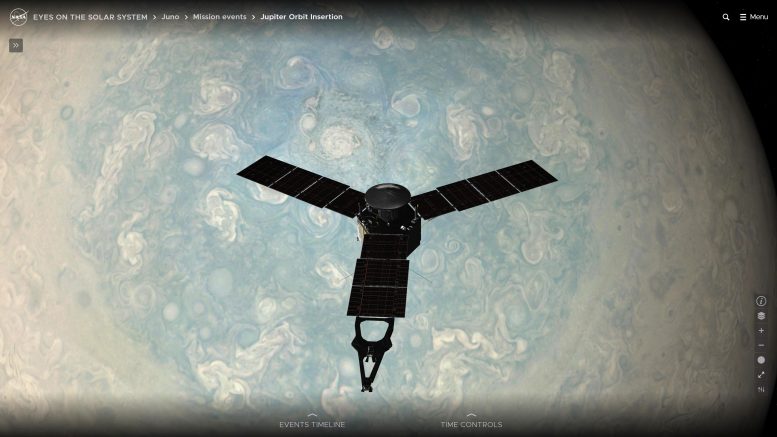
NASA’s Eyes on the Solar System includes renderings of 126 NASA spacecraft, including Juno, seen here flying by Jupiter. Credit: NASA/JPL-Caltech
NASA’s newly upgraded “Eyes on the Solar System” 3D visualization tool includes Artemis I’s trajectory along with a host of other new features.
NASA has updated and improved its “Eyes on the Solar System” 3D visualization tool, making interplanetary travel easier and more interactive than ever. More than two years in the making, the revamped system delivers improved navigation, better controls, and a host of new opportunities to learn about our incredible corner of the cosmos. All with no spacesuit required! You only need a device with an internet connection.
Watch a short video tutorial to get started with “Eyes on the Solar System.”
You can trace the course Artemis I will take to lunar orbit, or touch down with the Mars Perseverance Rover during its harrowing entry, descent, and landing on the Red Planet. It lets you learn the basics about dwarf planets or the finer points of gas giants, and ride alongside no fewer than 126 space missions past and present. You can even follow the paths of spacecraft and celestial bodies as far back as 1949 and as far into the future as 2049.
Anyone with an internet-enabled device browser can explore the past, present, and future of the solar system in 3D with NASA’s interactive Eyes on the Solar System. Click anywhere on the image to get a closer look at a 3D rendering of NASA’s Cassini spacecraft flying by Saturn’s moon Enceladus in 2015. Credit: NASA/JPL-Caltech
While you’re at it, you can rotate objects, compare them side by side, and even modulate the lighting as well as the perspective. The visuals are detailed and striking. This latest version of “Eyes on the Solar System” also lets you scroll through rich interactive journeys. For example, you can enjoy Voyager’s Grand Tour of Jupiter, Saturn, Uranus, and Neptune.
“The beauty of the new browser-based ‘Eyes on the Solar System’ is that it really invites exploration. You just need an internet connection, a device that has a web browser, and some curiosity,” said Jason Craig, the producer of the “Eyes on the Solar System” software at NASA’s Jet Propulsion Laboratory (JPL).


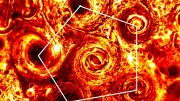
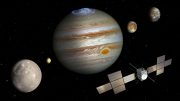


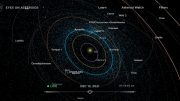
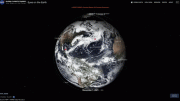
Be the first to comment on "Explore the Solar System in 3D With NASA’s New-and-Improved “Eyes on the Solar System”"